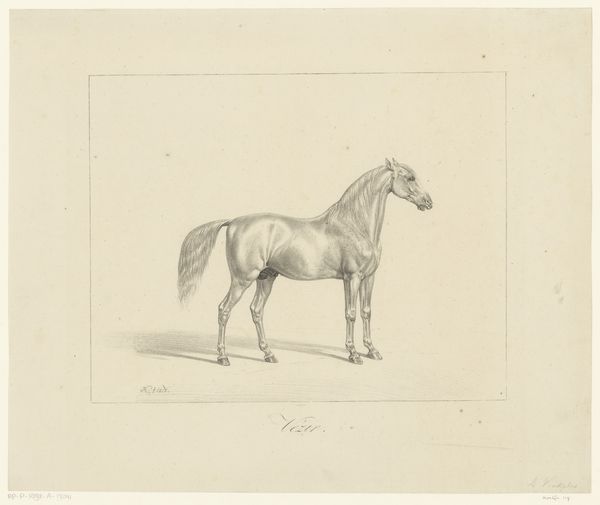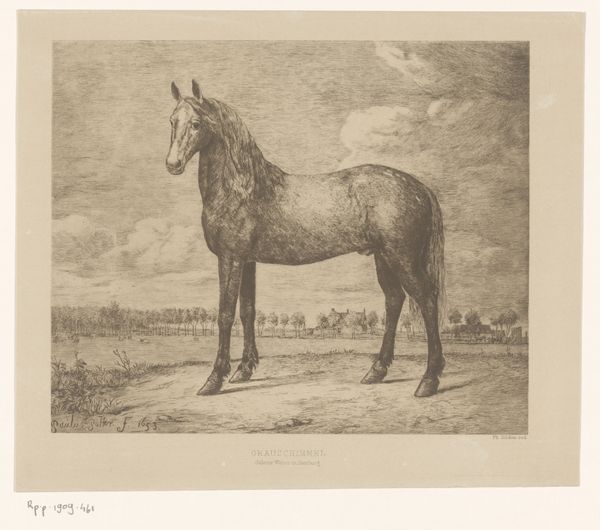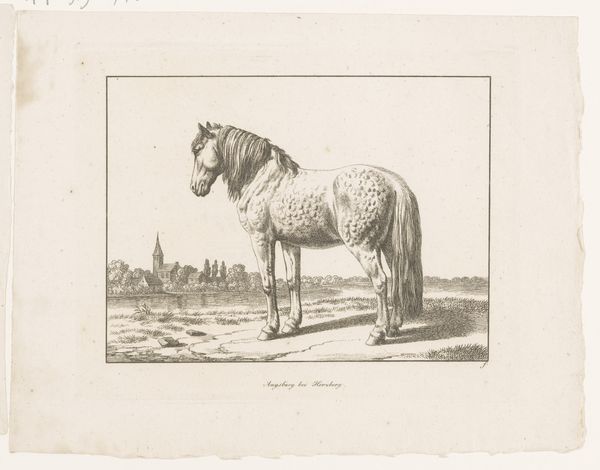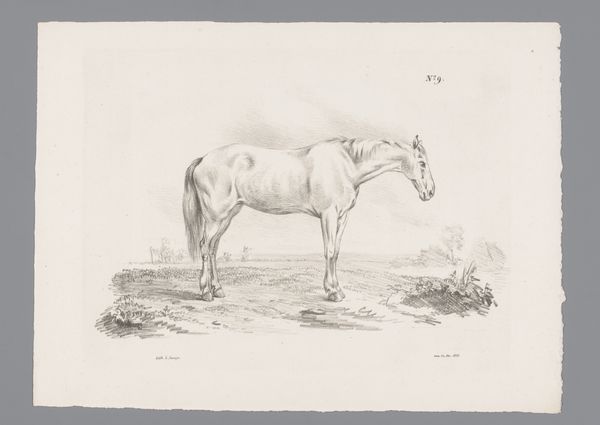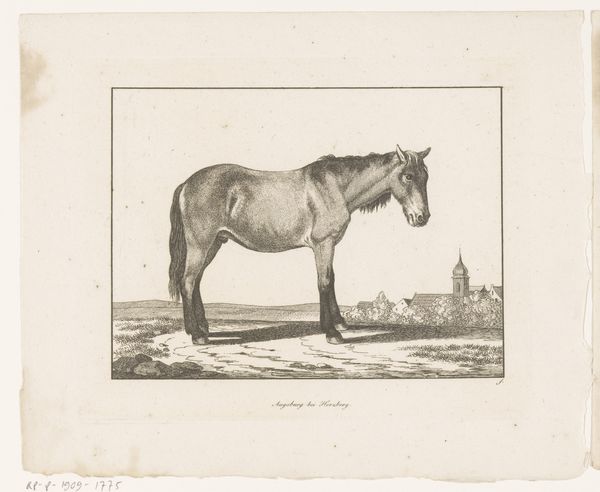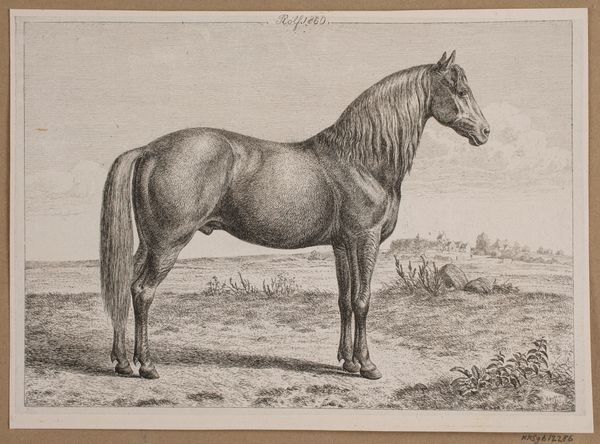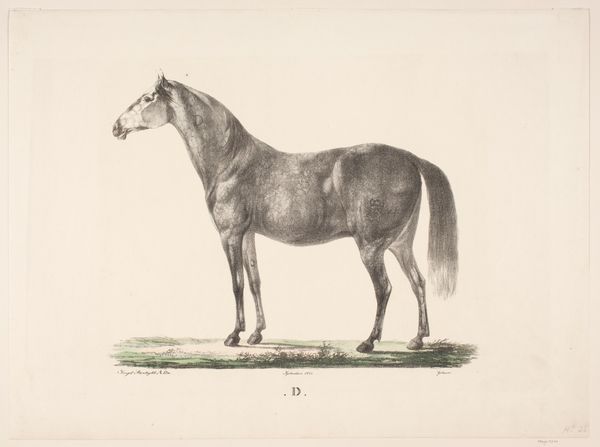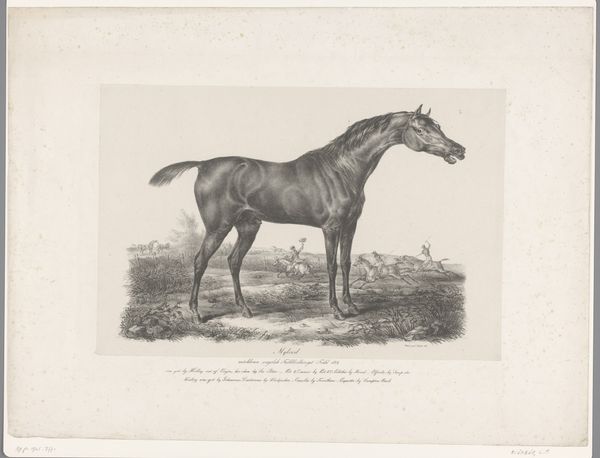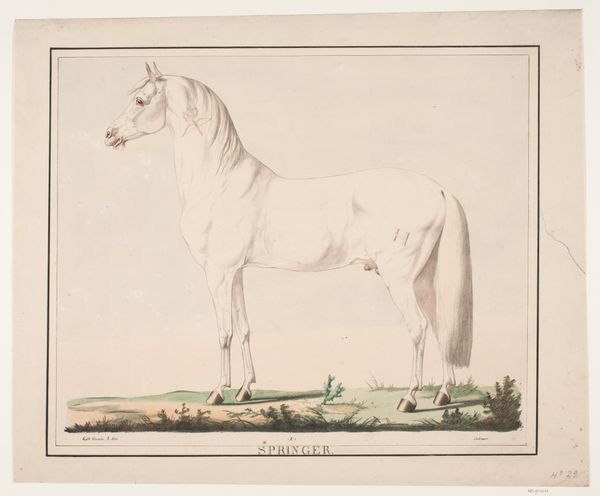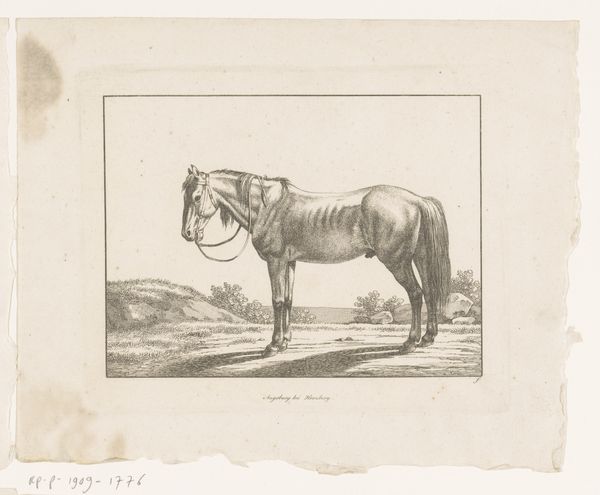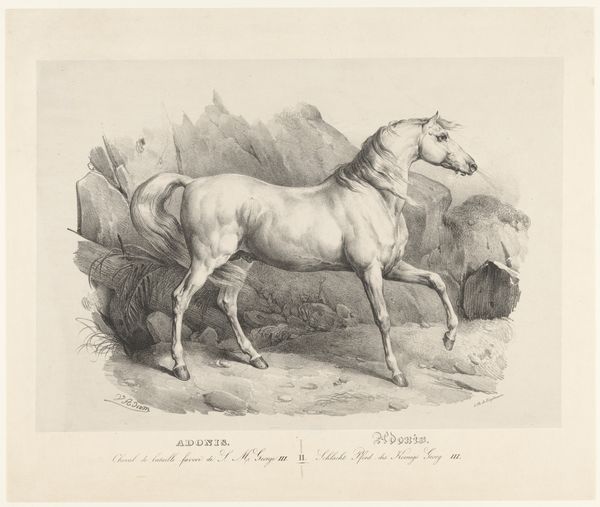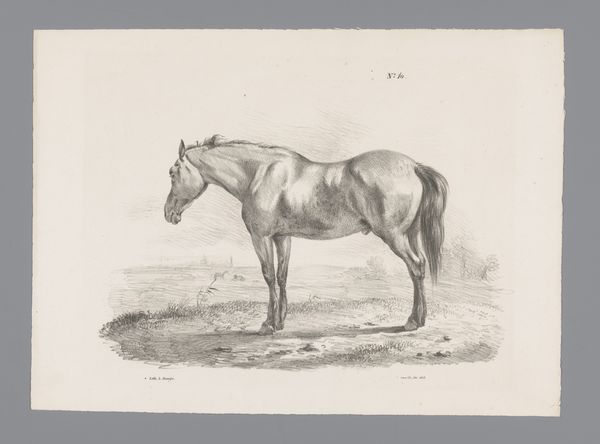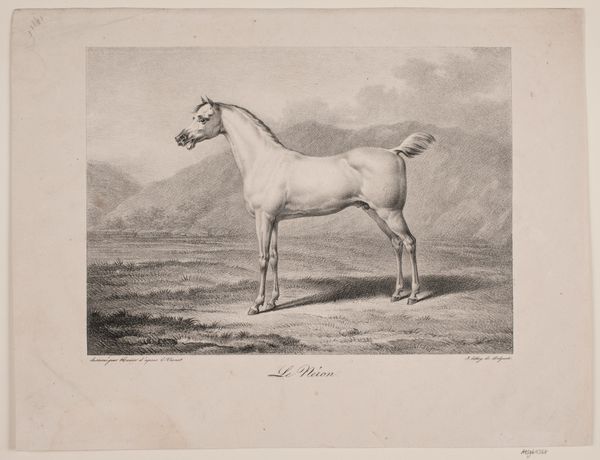
drawing, graphite
#
portrait
#
drawing
#
landscape
#
pencil drawing
#
horse
#
graphite
#
sketchbook drawing
#
realism
Dimensions: height 393 mm, width 510 mm, height 273 mm, width 387 mm
Copyright: Rijks Museum: Open Domain
Curator: Looking at this graphite drawing by Carl Fredrik Kiörboe, created in 1829, titled “Paard”, what springs to mind? Editor: An almost melancholic grace. There’s a quiet strength in the way the horse stands, so still, yet you sense its power ready to be unleashed. It is very serene. Curator: Consider the artistic process. Kiörboe’s choice of graphite allows for precise rendering of form and detail. The controlled application and layering of graphite contribute to creating depth. Note how labor-intensive these drawings are. The paper itself – likely a high-quality rag paper at the time. What would that mean for its cultural and financial value? Editor: True, the paper's very nature elevates it. And you're right, there's such diligence and detail! The gentle gradations create almost palpable muscle. Though it makes me think: is this just a horse or a representation of freedom viewed through the artist's eyes? Perhaps even a reflection of the wildness of untamed nature, something that an early 19th century person living through industrial revolution must have valued greatly? Curator: Context shapes our perceptions. As the Industrial Revolution took hold, depictions of rural life and animals, particularly working animals, held an appeal. Horses were central to agriculture and transportation, vital to production. It’s a portrait of status, of working-class animal labor, and the leisure activity of riding horses. Editor: Yes, and by immortalizing the horse, is the artist elevating labor? Or reminding us what industrial advances take from us? Either way, he succeeds! I’m certainly reflecting. It is very touching! Curator: Ultimately, analyzing this graphite drawing underscores art as a material product of human endeavor that intersects with specific social and economic conditions. Editor: Indeed. Now, thinking about the emotional impact of this horse, in its stillness, somehow evokes both yearning and profound admiration. A fitting ending note, wouldn’t you agree?
Comments
No comments
Be the first to comment and join the conversation on the ultimate creative platform.
